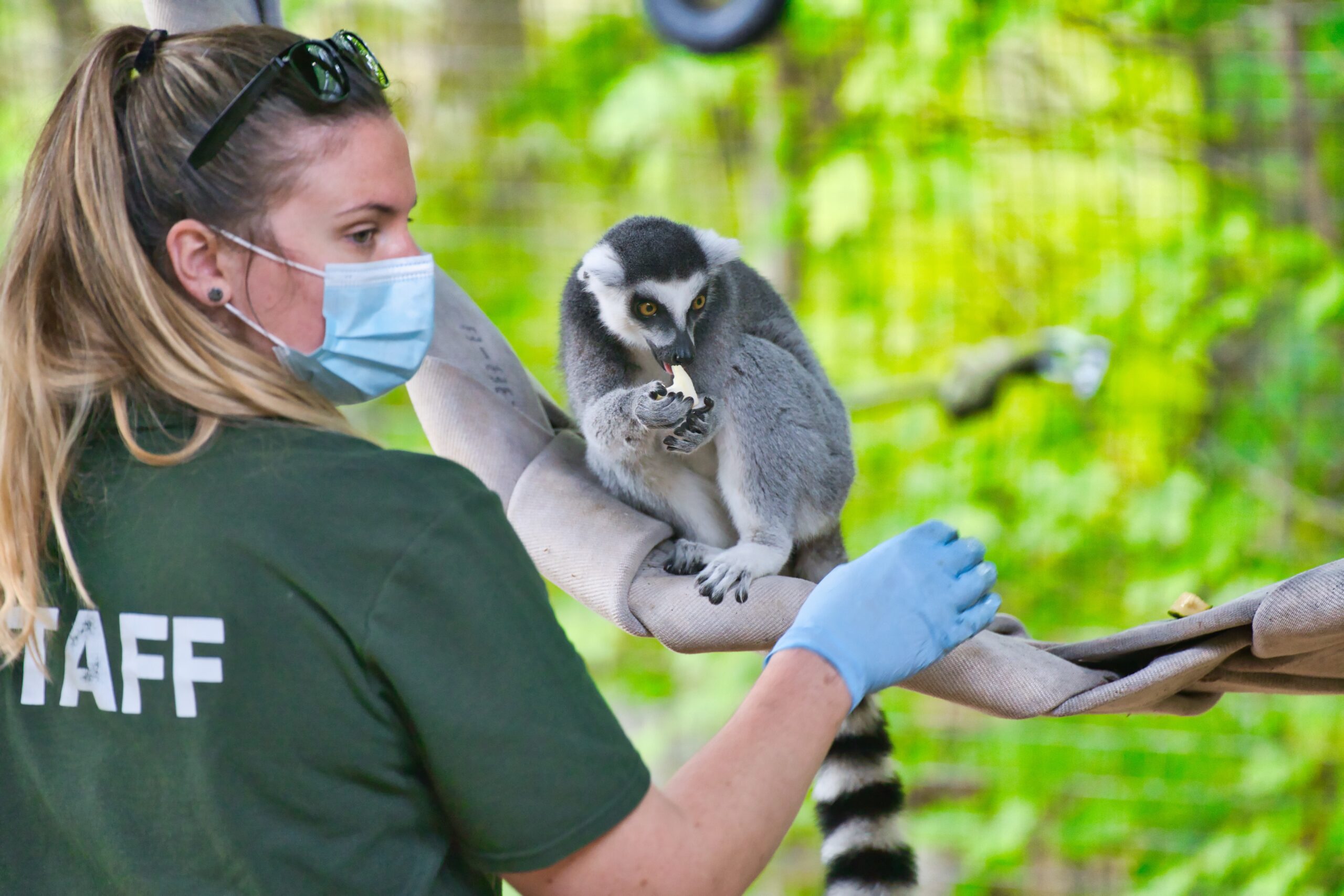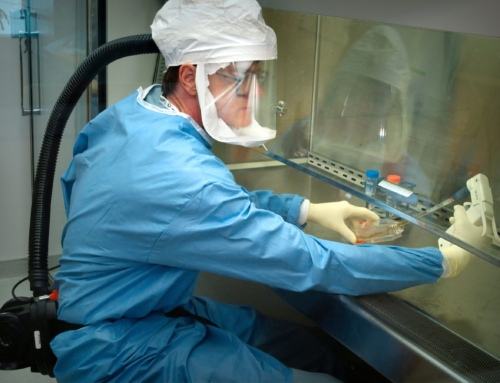Bridging the Gap: Eyam’s Gemini Platform in the Veterinary Vaccine Market
April 30, 2023
By Ryan M. Thomas
|
|
|
This month, some of the team attended the World Vaccine Congress in Washington, D.C. There, we had a booth where we were able to present the Gemini Platform and Eyam’s innovative technology platforms. At the congress, we also attended different presentations, including one from the Centers for Disease and Control (CDC). They shared the tremendous efforts that are done on an annual basis to control the spread of rabies. The current rabies vaccine is only effective for 9-12 months, and involves a tremendous organization of volunteers and professionals around the world to vaccinate both domesticate and wild animals. The current vaccine suffers by only providing short term protection, must be maintained in a cold chain storage, and is quite slow and costly to manufacture. These are all limitations that Eyam’s Gemini Platform overcomes and presents an interesting opportunity for Eyam to enter this $1B market. In addition to rabies, there are many other applications in the veterinary world that are not only commercially impactful, but also important for the protection of human health and our economy. In this month’s blog, I’d like to share with you a deeper dive into the “Importance of Animal Vaccines in Preventing Zoonotic Diseases.” In recent years, and especially since the emergence of COVID-19, there has been a growing concern about zoonotic diseases, which are infectious diseases that can be transmitted from animals to humans. These diseases can have a significant impact on public health, as well as on the economy and the environment. According to the World Health Organization (WHO), around 60% of all infectious diseases in humans are zoonotic in origin. The COVID-19 pandemic has once again highlighted the importance of animal vaccines in preventing the spread of zoonotic diseases. One example of the effectiveness of animal vaccines in preventing zoonotic diseases is the rabies vaccine. Rabies is a viral disease that is transmitted to humans through the saliva of infected animals, usually through a bite. The virus is commonly found in dogs, bats, and other wild animals. Vaccination of dogs, which are the primary reservoir of the virus, has been shown to significantly reduce the number of human cases of rabies. In fact, the WHO estimates that vaccinating dogs could eliminate human deaths from rabies by 2030. Another example is the H5N1 avian influenza virus, which is primarily a disease of birds but can also infect humans. Vaccination of poultry, which is the primary source of the virus, has been shown to reduce the spread of the virus and prevent human infections. In fact, in China, vaccination of poultry has been credited with reducing the number of human cases of H5N1 by over 90%. While the use of animal vaccines is not only beneficial for public health, it also has significant economic benefits. Diseases such as foot-and-mouth disease (FMD) and avian influenza can have a significant impact on the economy, particularly in countries that rely on agriculture. These diseases also have an impact on consumers who ultimately pay more for animal products, like we’ve seen over the last year with the eggflation and poultry. Outbreaks of FMD can result in the culling of millions of animals, leading to significant economic losses and higher prices for consumers at the grocery store that later also trickle down to prices that are paid at restaurants. Next generation vaccination programs of animals can help prevent these outbreaks, reducing the need for mass culling and minimizing the economic impact. The use of animal vaccines can also have important environmental benefits. When animals are infected with diseases, they often require treatment with antibiotics or other medications, which can lead to the development of antibiotic-resistant bacteria. The use of animal vaccines can help prevent the spread of disease, reducing the need for antibiotics and minimizing the development of antibiotic-resistant bacteria. Despite the benefits of animal vaccines, there are still significant challenges to maximize their application. One of the biggest challenges is the administration of animal vaccines. Currently, the majority of animal vaccines require humans to handle the animal and administer a shot, much like we’ve all experienced receiving a shot ourselves. The next generation of animal vaccines will not only need to be lower cost, have greater stability and be longer lasting, but will need to solve the issue of easier administration – perhaps with oral administration. Investing in animal vaccines is a win-win solution for animal and human health, as well as for the economy. We’ve spoken at length about Eyam’s Gemini Platform and its application for humans, but we’ve yet to really share the potential impact on animal health. The veterinary vaccine market is a rapidly growing industry that offers significant opportunities for companies that can develop innovative, low cost technologies. With the advent of new vaccine platforms, there is a growing interest in developing vaccines that are more effective, safer, and easier to administer. The veterinary vaccine market has traditionally been dominated by conventional technologies such as live-attenuated and inactivated vaccines. These technologies have limitations and some safety concerns, the need for multiple doses, difficulty in producing them in large quantities, and the critical limitation of needing to handle tens of millions of animals on an annual basis. Today, however, newer technologies such as recombinant protein and DNA vaccines are gaining ground due to their ability to induce stronger and more durable immune responses. As a reminder, Gemini is a bi-functional, self-amplifying platform that utilizes both naked self-amplifying RNA and DNA for the delivery of vaccines. The self-amplifying RNA and DNA can induce high levels of protein expression, leading to stronger and longer-lasting immune responses. Gemini’s unique design allows for the delivery of heterologous therapeutic proteins and RNAs that target multiple proteins in the same shot, eliminating the need for repeated immunizations. Gemini’s platform has several advantages over conventional technologies. Firstly, it eliminates the need for lipid nanoparticles (LNPs) for delivery, making it more stable and easier to produce, transport, store, and administer. This allows Gemini to be stored at ambient temperatures between 2° and 8°C, making it ideal for use in regions where cold chain storage may be difficult to maintain. Gemini’s self-amplifying nature also means lower toxicity and a decreased need for multiple doses. Secondly, Gemini’s ability to induce a strong and durable immune response makes it ideal for use in the veterinary vaccine market. This is because animals, like humans, can develop resistance to conventional vaccines over time, leading to the need for booster shots. Gemini’s ability to induce a longer-lasting immune response could significantly reduce the need for booster shots, making it more convenient and cost-effective for animal owners. Finally, the Gemini platform can be used to develop vaccines for a wide range of animal species. This includes pets, livestock, and wildlife. With the growing demand for vaccines that protect against zoonotic diseases, such as COVID-19 potentially emerging from animals, the importance of developing vaccines for wildlife has become increasingly apparent. The Gemini platform’s ability to target multiple proteins in the same shot makes it ideal for developing vaccines that protect against multiple strains of a particular pathogen. The veterinary vaccine market presents significant opportunities for Eyam. Gemini’s ability to induce a strong and durable immune response, as well as its suitability for use in a wide range of animal species, makes it an ideal platform for developing vaccines that protect against zoonotic diseases. |
Bridging the Gap: Eyam’s Gemini Platform in the Veterinary Vaccine Market
April 30, 2023
By Ryan M. Thomas
|
|
|
This month, some of the team attended the World Vaccine Congress in Washington, D.C. There, we had a booth where we were able to present the Gemini Platform and Eyam’s innovative technology platforms. At the congress, we also attended different presentations, including one from the Centers for Disease and Control (CDC). They shared the tremendous efforts that are done on an annual basis to control the spread of rabies. The current rabies vaccine is only effective for 9-12 months, and involves a tremendous organization of volunteers and professionals around the world to vaccinate both domesticate and wild animals. The current vaccine suffers by only providing short term protection, must be maintained in a cold chain storage, and is quite slow and costly to manufacture. These are all limitations that Eyam’s Gemini Platform overcomes and presents an interesting opportunity for Eyam to enter this $1B market. In addition to rabies, there are many other applications in the veterinary world that are not only commercially impactful, but also important for the protection of human health and our economy. In this month’s blog, I’d like to share with you a deeper dive into the “Importance of Animal Vaccines in Preventing Zoonotic Diseases.” In recent years, and especially since the emergence of COVID-19, there has been a growing concern about zoonotic diseases, which are infectious diseases that can be transmitted from animals to humans. These diseases can have a significant impact on public health, as well as on the economy and the environment. According to the World Health Organization (WHO), around 60% of all infectious diseases in humans are zoonotic in origin. The COVID-19 pandemic has once again highlighted the importance of animal vaccines in preventing the spread of zoonotic diseases. One example of the effectiveness of animal vaccines in preventing zoonotic diseases is the rabies vaccine. Rabies is a viral disease that is transmitted to humans through the saliva of infected animals, usually through a bite. The virus is commonly found in dogs, bats, and other wild animals. Vaccination of dogs, which are the primary reservoir of the virus, has been shown to significantly reduce the number of human cases of rabies. In fact, the WHO estimates that vaccinating dogs could eliminate human deaths from rabies by 2030. Another example is the H5N1 avian influenza virus, which is primarily a disease of birds but can also infect humans. Vaccination of poultry, which is the primary source of the virus, has been shown to reduce the spread of the virus and prevent human infections. In fact, in China, vaccination of poultry has been credited with reducing the number of human cases of H5N1 by over 90%. While the use of animal vaccines is not only beneficial for public health, it also has significant economic benefits. Diseases such as foot-and-mouth disease (FMD) and avian influenza can have a significant impact on the economy, particularly in countries that rely on agriculture. These diseases also have an impact on consumers who ultimately pay more for animal products, like we’ve seen over the last year with the eggflation and poultry. Outbreaks of FMD can result in the culling of millions of animals, leading to significant economic losses and higher prices for consumers at the grocery store that later also trickle down to prices that are paid at restaurants. Next generation vaccination programs of animals can help prevent these outbreaks, reducing the need for mass culling and minimizing the economic impact. The use of animal vaccines can also have important environmental benefits. When animals are infected with diseases, they often require treatment with antibiotics or other medications, which can lead to the development of antibiotic-resistant bacteria. The use of animal vaccines can help prevent the spread of disease, reducing the need for antibiotics and minimizing the development of antibiotic-resistant bacteria. Despite the benefits of animal vaccines, there are still significant challenges to maximize their application. One of the biggest challenges is the administration of animal vaccines. Currently, the majority of animal vaccines require humans to handle the animal and administer a shot, much like we’ve all experienced receiving a shot ourselves. The next generation of animal vaccines will not only need to be lower cost, have greater stability and be longer lasting, but will need to solve the issue of easier administration – perhaps with oral administration. Investing in animal vaccines is a win-win solution for animal and human health, as well as for the economy. We’ve spoken at length about Eyam’s Gemini Platform and its application for humans, but we’ve yet to really share the potential impact on animal health. The veterinary vaccine market is a rapidly growing industry that offers significant opportunities for companies that can develop innovative, low cost technologies. With the advent of new vaccine platforms, there is a growing interest in developing vaccines that are more effective, safer, and easier to administer. The veterinary vaccine market has traditionally been dominated by conventional technologies such as live-attenuated and inactivated vaccines. These technologies have limitations and some safety concerns, the need for multiple doses, difficulty in producing them in large quantities, and the critical limitation of needing to handle tens of millions of animals on an annual basis. Today, however, newer technologies such as recombinant protein and DNA vaccines are gaining ground due to their ability to induce stronger and more durable immune responses. As a reminder, Gemini is a bi-functional, self-amplifying platform that utilizes both naked self-amplifying RNA and DNA for the delivery of vaccines. The self-amplifying RNA and DNA can induce high levels of protein expression, leading to stronger and longer-lasting immune responses. Gemini’s unique design allows for the delivery of heterologous therapeutic proteins and RNAs that target multiple proteins in the same shot, eliminating the need for repeated immunizations. Gemini’s platform has several advantages over conventional technologies. Firstly, it eliminates the need for lipid nanoparticles (LNPs) for delivery, making it more stable and easier to produce, transport, store, and administer. This allows Gemini to be stored at ambient temperatures between 2° and 8°C, making it ideal for use in regions where cold chain storage may be difficult to maintain. Gemini’s self-amplifying nature also means lower toxicity and a decreased need for multiple doses. Secondly, Gemini’s ability to induce a strong and durable immune response makes it ideal for use in the veterinary vaccine market. This is because animals, like humans, can develop resistance to conventional vaccines over time, leading to the need for booster shots. Gemini’s ability to induce a longer-lasting immune response could significantly reduce the need for booster shots, making it more convenient and cost-effective for animal owners. Finally, the Gemini platform can be used to develop vaccines for a wide range of animal species. This includes pets, livestock, and wildlife. With the growing demand for vaccines that protect against zoonotic diseases, such as COVID-19 potentially emerging from animals, the importance of developing vaccines for wildlife has become increasingly apparent. The Gemini platform’s ability to target multiple proteins in the same shot makes it ideal for developing vaccines that protect against multiple strains of a particular pathogen. The veterinary vaccine market presents significant opportunities for Eyam. Gemini’s ability to induce a strong and durable immune response, as well as its suitability for use in a wide range of animal species, makes it an ideal platform for developing vaccines that protect against zoonotic diseases. |








